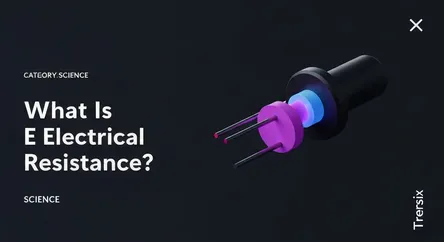Science
What Is Electrical Resistance?

An explanation of electrical resistance, the force that opposes the flow of current, and its essential role in technology and everyday appliances.
What is it?
Electrical resistance is a measure of a material's opposition to the flow of electric current. Measured in a unit called ohms (Ω), it quantifies how difficult it is for electrons to pass through a substance. Materials with very low resistance, such as copper, are called conductors, while materials with very high resistance, like rubber, are known as insulators. The resistance of an object depends on factors including its length, cross-sectional area, the type of material, and temperature. This opposition to current flow causes electrical energy to be converted into heat.
Why is it trending?
While a fundamental concept, the study of resistance remains critical to innovation in science and technology. Advances in materials science are focused on developing new materials with specific resistive properties for next-generation electronics. Research into superconductors, which are materials that exhibit zero electrical resistance at very low temperatures, promises to revolutionize energy transmission by eliminating power loss. Furthermore, understanding resistance is key to improving energy efficiency in all devices and developing more powerful and compact technologies, from batteries to computer chips, making it a continually relevant field of study.
How does it affect people?
Electrical resistance is integral to many devices used daily. It is harnessed to produce heat in appliances like electric stoves, toasters, and heaters. The filament in an incandescent light bulb glows because its high resistance causes it to heat up when current passes through it. Inside virtually all electronic devices, such as smartphones and computers, components called resistors are used to control the flow of current and protect other parts of the circuit. Safety devices like fuses also utilize resistance, containing a wire that melts and breaks the circuit if the current gets too high.